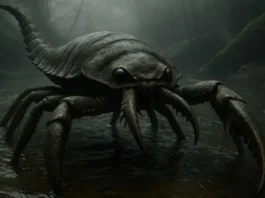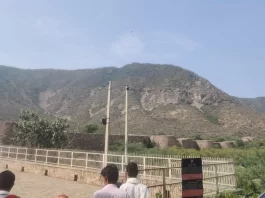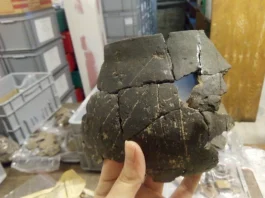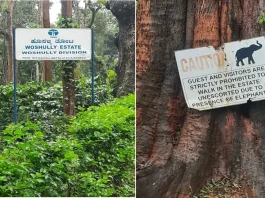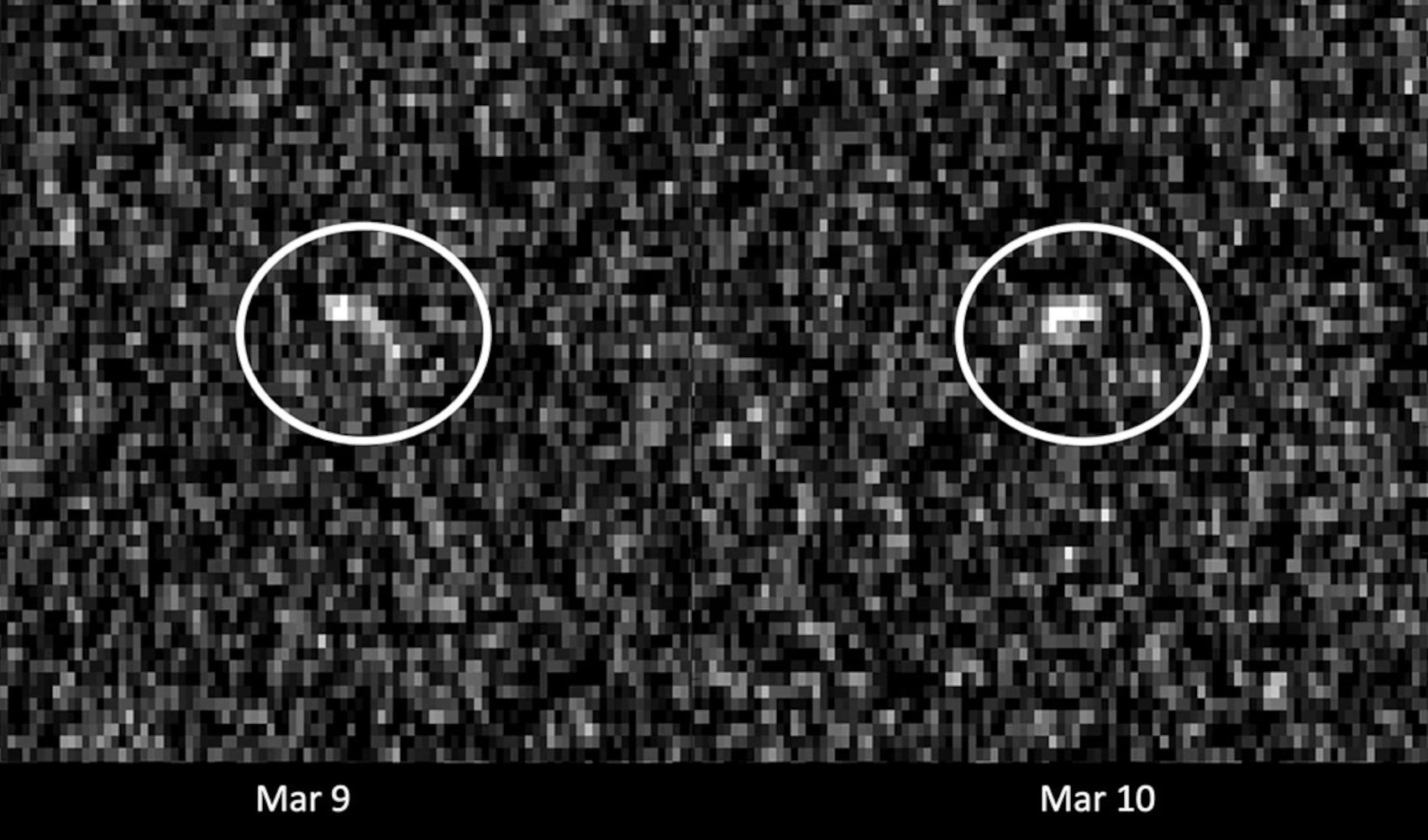
A critically dangerous asteroid Apophis with a diameter of almost 400 meters, weighing more than 30 tons, will fly up to Earth in 2029.
According to researchers’ forecasts, Apophis (named after the ancient Egyptian god of destruction Apophis) will be closest to Earth on April 13.
“The approach speed will be 7.42 kilometres per second. The energy released when the body collides with the Earth’s surface will be 1717 megatons. The strength of an earthquake within a radius of 10 kilometres from the crash site can reach 6.5 points on the Richter scale, the wind speed will be at least 790 meters per second,” predicts the Russian Research Institute of Civil Defense and Emergencies in case of a possible collision of Apophis with the Earth.
The asteroid collision is predicted to cause an explosion 30 times more potent than the most powerful Soviet thermonuclear bomb in 1961, about 58 megatons.
The asteroid 99942 Apophis was discovered in 2004 and was once considered as one of the most hazardous asteroids which could impact the Earth. But after tracking Apophis and its orbit, the assessment changed. New radar observation along with precise orbit analysis has led the astronomers to conclude that there is no risk of Apophis impacting our planet for at least a century.
Big Ben and 7482 YD48
This week, NASA reported that two dangerous asteroids are flying towards Earth. One of them – 2013 YD48 – is the size of Big Ben. The asteroid is about 104 meters wide and will pass the planet on January 11 at a distance of 5.6 million kilometres. The second celestial body – 7482 YD48 – twice the size of the American Empire State Building, will approach Earth on January 18. According to NASA’s Center for the Study of Near-Earth Objects, this is considered a close approach.
Why are asteroids so dangerous? Size didn’t matter: how asteroids destroyed all life?
Throughout its long 4.5 billion history, the Earth has been heavily bombarded from space from time to time and killed a lot of life. The most famous trigger of one of such mass extinctions, which happened on the border of the Cretaceous and Paleogene periods 66 million years ago and killed the dinosaurs. Along with dinosaurs, many other taxa of animals and plants became extinct, including mosasaurs, plesiosaurs, flying pterosaurs, and many molluscs species, including ammonites, belemnites, algae, etc.
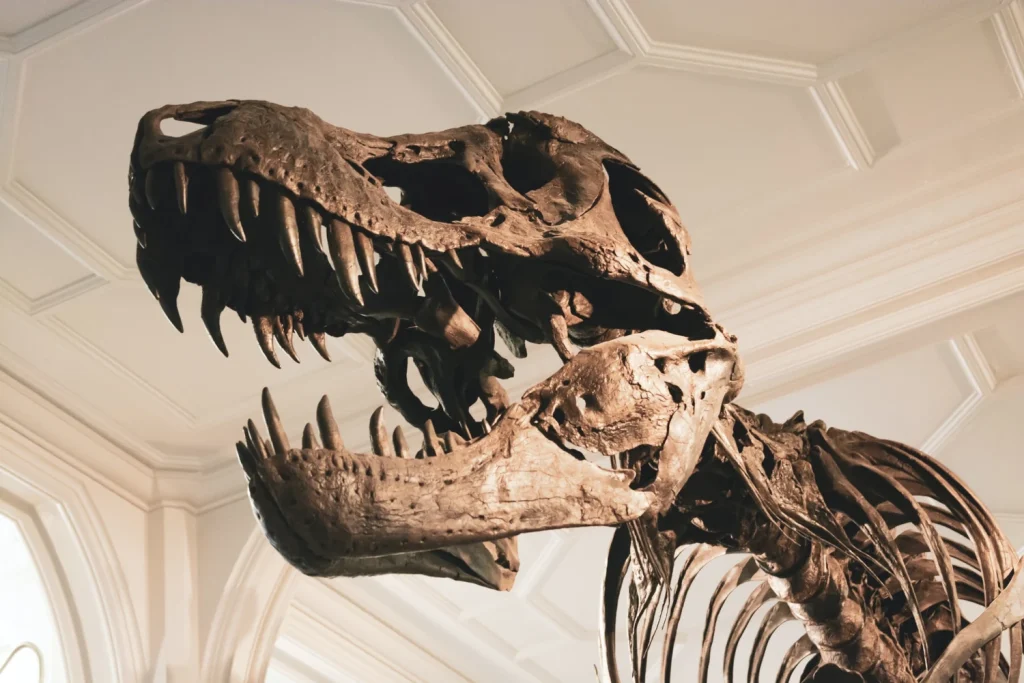
It was definitely not the largest asteroid to fall on Earth that resulted in the formation of the Chicxulub crater with a diameter of about 180 km on the Yucatan Peninsula.
New research by Spanish and British scientists shows that the destructive nature of events associated with the fall of large asteroids is primarily determined not by their size but by the composition of emissions into the atmosphere.
‘If we focus on studying the mineral composition of asteroids and the places where they fall. In that case, we can eliminate many of the complexities of previous theories explaining the mass extinctions of animals and plants by impact events,’ explains the study.
The clay mineral that causes catastrophic mass extinctions is not in itself toxic, but it acts as an aerosol atypical for the Earth, causing the formation of embryos of ice cores, which then decisively affect the dynamics of cloudiness, playing an important role in the microphysics of clouds and modulating the global albedo – reflective the ability of the whole Earth.
Impact events lead to an instantaneous (by geological standards) distribution of a fraction of mineral dust (with particles less than 200 µm in diameter), which easily spreads over long distances (and is 10–1000 times higher) than the usual annual dust emissions into the atmosphere. The resulting clouds, in turn, change the insolation regime on Earth – less solar radiation reaches the surface, the overall heating of the planet decreases for many years and its climate changes. In addition, the Earth’s atmosphere continues to become more sensitive to the effects of warming and is more sensitive to the effects of greenhouse gas emissions, for example, from erupting volcanoes. The consequences of these emissions have been felt for thousands and even hundreds of thousands of years.
Many alternative mechanisms for the mass destruction of animals and plants have been proposed. Among the most popular alternatives are powerful and prolonged volcanic eruptions; however, like impact events, such cases are not always unambiguously correlated with mass extinctions.
The study says that previously the asteroids seriously changed the composition of aerosols in the Earth’s atmosphere by switching climatological modes. However, this is now done by the modern economic activity of mankind. This activity combined with an asteroid strike can be disastrous.

